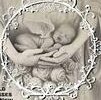Choosing burial clothing for a loved one is an important and thoughtful task. Many factors come into play, including their cultural background, religious beliefs, and personal style. By considering all of these aspects, you can select attire that will honor your loved one and respect their final journey.
In the past, funerals were a very formal affair. Many people chose to wear suits, with a shirt and tie for men and a skirt or dress for women. However, as funeral traditions have adapted to modern times, it is increasingly acceptable to wear less formal attire. It is advisable to avoid light colors such as yellows and pinks, and instead opt for darker shades of grays and blues. In addition, clothing should be loose-fitting to allow for any swelling that may occur after the body is buried or cremated.
There are many sources where you can obtain funeral or burial clothes. Funeral homes often have a selection that you can choose from or that they can recommend someone to purchase from. They can also offer convenience and expertise in handling all of the necessary arrangements for your loved one. Alternatively, many religious institutions will have clothing available for those in need.
While it is normal to be upset when a friend or family member passes away, it can be especially difficult for parents who lose a child. Out of every thousand live births in the United States, five infants die, and that doesn’t even include miscarriages or stillbirths. This can be a very traumatic time for families, and they need to find ways to cope with their loss and to provide their child with the best possible care.
Thankfully, a Utah seamstress is helping to ease this burden by sewing beautiful but practical burial garments for these little ones. Ciara Hulet from member station KUER reports.
First, the fabric should be cut into four pieces (an “exterior” FRONT from the wedding/prom dress, an “interior” FRONT from the lining fabric, and the lining back piece of the gown). Pin the exterior front to the lining front pieces, right sides together, then sew them. Next, place the ribbon ties at the neck and at 1/3 of the way down the back. Sew a short stitch around each of the ribbons to secure them to the fabric, making sure that these stitches will be hidden when you finish the seam of the exterior gown in a later step.
When the gown is finished, pin the back of the lining to the back of the exterior fabric, matching the shoulder seams and the back edges. Sew a 1/4″ seam up the center back of the gown, being careful not to catch any loose ribbon ends.
Before the end of the year, many churches and other institutions will hold drives to collect new and gently used wedding dresses to be turned into burial garments for infants who have passed away. Then, volunteers will sew the dresses and other accessories together to create a fitting tribute for these precious children.
